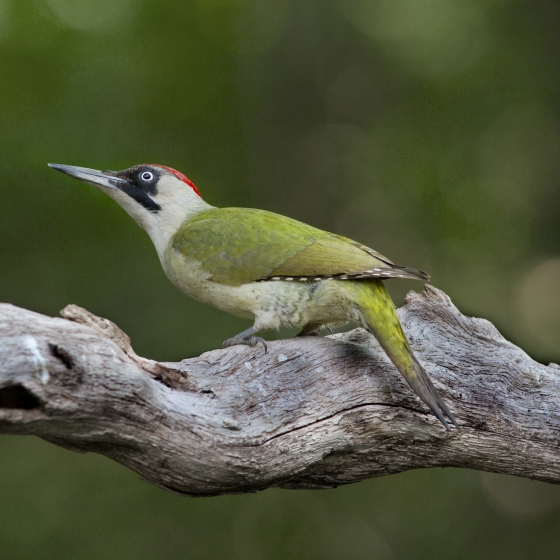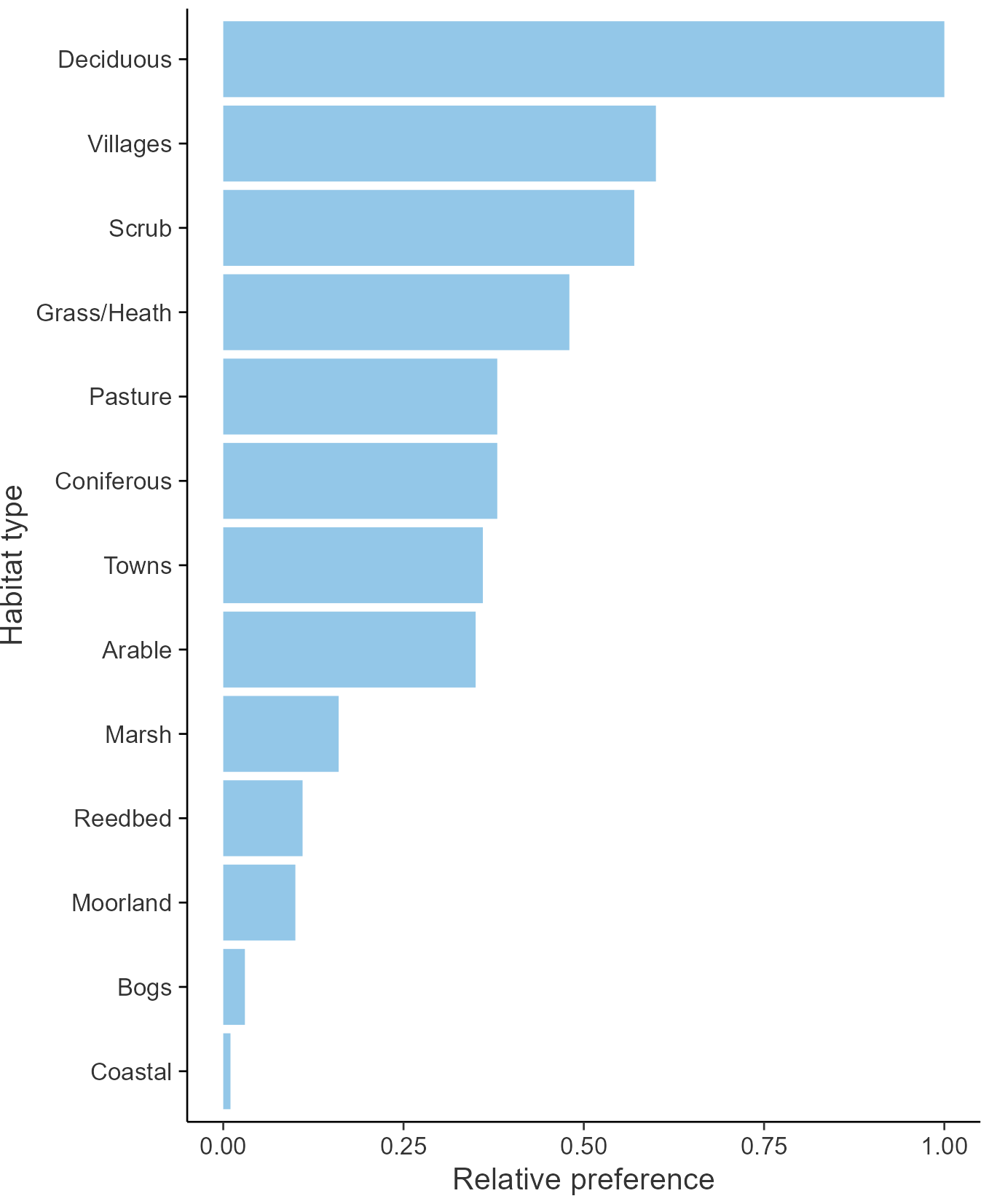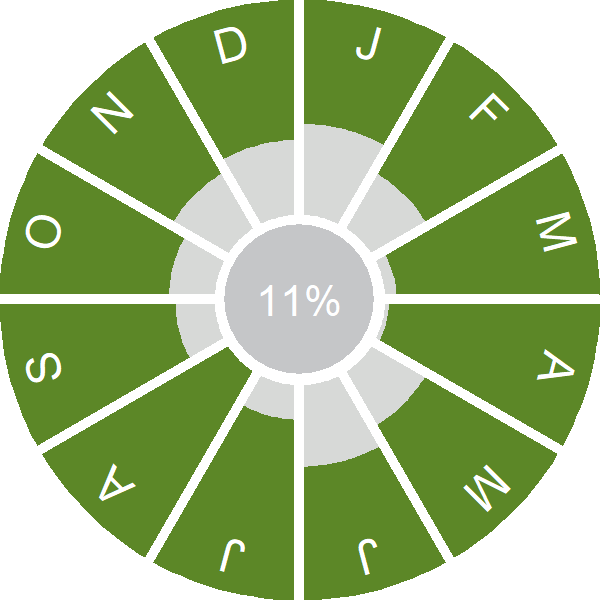Green Woodpecker

Introduction
The Green Woodpecker is the largest woodpecker species found in the UK. Its loud laughing call is behind the affectionate folk name of 'yaffle'.
Green Woodpecker diet consists primarily of ants, and individuals may be seen feeding from an ant nest located in the short turf of a garden lawn or woodland ride. Both sexes have green plumage with a yellow rump and red cap; the red centre to the black 'moustache' distinguishes the male birds from females, which lack this feature.
Green Woodpeckers can be found across much of Britain, though favouring lowland habitats, but are absent from Ireland, the Channel Islands and the Isle of Man, together with much of the north-west of Scotland and the Scottish islands.
- Our Trends Explorer gives you the latest insight into how this species' population is changing.

Key Stats
Identification
Songs and Calls
Song:
Call:
Alarm call:
Flight call:
Status and Trends
Conservation Status
Population Change
Green Woodpecker populations rose steadily in Britain from 1966 until around 2008, except for a period of stability or shallow decline centred around 1980. There was considerable range expansion in central and eastern Scotland between the 1968-72 and 1988-91 atlas periods. Results from the 2007-11 Atlas indicated that expansion was continuing across England and Scotland, but not in Wales, where major retraction from some western regions was detected in 2008-11 (Balmer et al. 2013). Similarly, the BBS map of change in relative density between 1994-96 and 2007-09 indicated that there had been strong contrast between decreases in southwestern England and South Wales and increase elsewhere, especially in southeastern England. However, BBS trends suggest more recent shallow declines across England. There has been an increase across Europe since 1980 (PECBMS: PECBMS 2020a>). Following a review of its status in Europe, the species was moved from amber to the UK green list in 2015 (Eaton et al. 2015).
Distribution
Green Woodpeckers are distributed fairly continuously across southern England but become patchy in west Wales, northern England and in south-central Scotland. They are absent from the Channel Islands, Isle of Man and from Ireland.
Occupied 10-km squares in UK
or view it on Bird Atlas Mapstore.
or view it on Bird Atlas Mapstore.
European Distribution Map
Distribution Change
Overall, the change in breeding range size is relatively small, but this conceals a clear east–west divide in trends, with declining tetrad occupancy in Wales and southwest England contrasting strongly with increasing tetrad occupancy in central and eastern England.
Change in occupied 10-km squares in the UK
or view it on Bird Atlas Mapstore.
or view it on Bird Atlas Mapstore.
Seasonality
Green Woodpeckers are widely recorded throughout the year, especially in spring when highly vocal, and post-breeding.
Weekly pattern of occurrence
The graph shows when the species is present in the UK, with taller bars indicating a higher likelihood of encountering the species in appropriate regions and habitats.

Habitats
Breeding season habitats
Relative frequency by habitat
The graph shows the habitats occupied in the breeding season, with the most utilised habitats shown at the top. Bars of similar size indicate the species is equally likely to be recorded in those habitats.

Movement
Britain & Ireland movement
Foreign locations of birds ringed or recovered in Britain & Ireland
Dots show the foreign destinations of birds ringed in Britain & Ireland, and the origins of birds ringed overseas that were subsequently recaptured, resighted or found dead in Britain & Ireland. Dot colours indicate the time of year that the species was present at the location.
- Winter (Nov-Feb)
- Spring (Mar-Apr)
- Summer (May-Jul)
- Autumn (Aug-Oct)

Biology
Productivity and Nesting
Nesting timing
Egg measurements
Clutch Size
Incubation
Fledging
Survival and Longevity
Survival is shown as the proportion of birds surviving from one year to the next and is derived from bird ringing data. It can also be used to estimate how long birds typically live.
View number ringed each year in the Online Ringing Report.
lifespan
Biometrics
Wing length and body weights are from live birds (source).
Wing length
Body weight
Ring Size
Classification, names and codes
Classification and Codes
- Order: Piciformes
- Family: Picidae
- Scientific name: Picus viridis
- Authority: Linnaeus, 1758
- BTO 2-letter code: G.
- BTO 5-letter code: GREWO
- Euring code number: 8560
Alternate species names
- Catalan: picot verd comú
- Czech: žluna zelená
- Danish: Grønspætte
- Dutch: Groene Specht
- Estonian: roherähn e. meltsas
- Finnish: vihertikka
- French: Pic vert
- Gaelic: Lasair-choille
- German: Grünspecht
- Hungarian: zöld küllo
- Icelandic: Grænspæta
- Irish: Cnagaire Glas
- Italian: Picchio verde
- Latvian: zala dzilna
- Lithuanian: žalioji meleta
- Norwegian: Grønnspett
- Polish: dzieciol zielony
- Portuguese: peto-real
- Slovak: žlna zelená
- Slovenian: zelena žolna
- Spanish: Pito real euroasiático
- Swedish: gröngöling
- Welsh: Cnocell Werdd
- English folkname(s): Yaffle, Pick-a-Tree, Rainfowl
Research
Causes of Change and Solutions
Causes of change
There is little evidence available regarding the demographic or ecological causes of population increase in this species.
Further information on causes of change
No information on demographic trends for this species is available. The ecological factors underlying the increase in population size are not yet known but, given the species' susceptibility to cold weather, it may be related to climate change. Smith (2007) found that Green Woodpeckers were not limited by nest-sites in his study woods in southern England and linked the upward trend in numbers to the availability of food outside the woods and higher survival due to a series of mild winters.
Information about conservation actions
This species has been increasing until recently so is not a species of conservation concern and conservation actions are not currently required in most areas of the UK. However, the recent slight decline and losses in western regions do raise potential concerns.
A radiotracking study following a breeding pair in Dorset for over a month found that foraging was, unsurprisingly, strongly influenced by the abundance of ants (especially Lasius flavius), which were most abundant in areas of short grass with high plant richness such as sheep grazed land and garden lawns; arable and cattle grazed fields were avoided by the birds (Alder & Marsden 2010). Hence provision of similar natural or semi-natural grassland habitats may be important, in particular in the areas where this species is declining.

